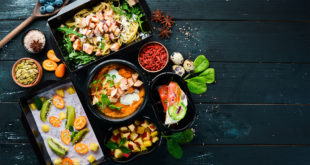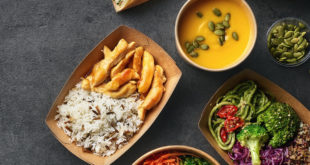
Did you know that here in the United States we toss 40 percent of our food—perfectly edible food—into the trash? That’s a 50 percent increase since the 1970s.
At our nation’s restaurants, a pound of food is wasted per meal created. Food waste is the single most abundant material in our landfills. (Check out this infographic for more food waste stats—it’s an eye-opener.)
You don’t have to be a card-carrying, Greenpeace-dues-paying hippie to see the folly in this extravagance. Anyone with even a smidgen of thrift can see that this level of waste is utterly bonkers.
Here’s the good news: reversing this wasteful behavior isn’t hard, and you’ll save a bundle of money in the process.
So what can you do with your food scraps? An improvised soup—sometimes referred to as “garbage soup” or “kitchen sink soup”—is a good choice, particularly this time of year, with cooler temperatures ushering in the hot soup season.
Tip: Don’t call it garbage soup outside the kitchen. 🙂
I’ve found that the hardest part is simply getting in the habit of saving your scraps. One strategy is to designate specific food storage bins to collect scraps for later use, either for the fridge or the freezer. That way, there isn’t so much pressure to immediately put them to use.
So what kind of scraps can you freeze and use? Well, if you making stock, the sky’s the limit! Here are some ideas to get you started:
- Meat bones (be extra sure to keep frozen until you use them to prevent spoiling)
- Corn cobs
- Vegetable tops (e.g. carrots, leeks, beets and fennel)
- Tomato skins, seeds and juice
- Potato skins
- Coffee
- Shrimp shells
- Mushroom stems
- Carrot peelings
- Cabbage cores
- Brocoli stumps
- Pepper seeds and pith
- Celery root stems and leaves
- Onion and garlic ends
- Herb stems
Thrifty Good Life has a helpful warning:
Items to avoid: NEVER use any green parts from vegetables in the nightshade family (tomato, pepper, potato) as these plant parts contain toxic elements. This means – avoid the stems or leaves of bell peppers, tomatoes as well as potatoes with any sprouts on them or green color. Never use any vegetable with black mold or any old/rotten meat.
Feel free to share your own food-scrap-saving tips in the comments!
 Corner Booth Blog | TundraFMP Restaurant Supply, News & Equipment Blog
Corner Booth Blog | TundraFMP Restaurant Supply, News & Equipment Blog




Thanks Jeb for your article. I dislike food waste mainly because it is wasting money and there are starving people in the world which makes it just horrible to me. I love finding new uses for things and or ways to save them. We have a composter but if i could save them for some edible purpose that would be tops. I like to save bread crumbs for making bird treats. Or you could make breading. I have saved citrus peels to make cleaners from. Put in the disposal or dishwasher on top rack and then removed to clean it. Dried citrus for potporri or powder it for zest in cooking. I ve used the celery leaves as an herb and also as lettuce. Ive used the tops and bottoms of veg as you said for stock. Cucumber is great for depuffing eyes. And also great to infuse your water with. Celery can be revived in a glass of cold water..used tea bags are awesome for eye infections just hold on your eye several times a day(really helps) You can dye your hair and fabric w tea and coffee and other veggies….these are just off the top of my head..
Those are GREAT tips — thanks so much Kim!